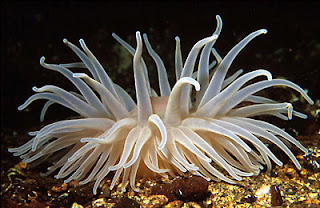Poster:
Main Circular parametric series:
Substrate/Surface Morph component:
Wednesday, 28 March 2012
Sea Structure
A final render of my iterations
A draft poster of iteration layout
My main series, which creates a series of parametric circles containing simple sliders which control global scale, radial and polar desity rotation, height and radius.
The substrate series, which projects a series of line (to form a substarte) onto a peice of geometry, in this case a sphere. This series is then connected to the main series creating further variation with iterations.
First iterations
Using substrate/surface morph series
Some of my iterations use a piping node to create a thicker skeletal form. This can be turned on/off and adjusted (radially) to acheive different affects.
A draft poster of iteration layout
My main series, which creates a series of parametric circles containing simple sliders which control global scale, radial and polar desity rotation, height and radius.
The substrate series, which projects a series of line (to form a substarte) onto a peice of geometry, in this case a sphere. This series is then connected to the main series creating further variation with iterations.
First iterations
Using substrate/surface morph series
Some of my iterations use a piping node to create a thicker skeletal form. This can be turned on/off and adjusted (radially) to acheive different affects.
Wednesday, 14 March 2012
Research
I've been looking into some other parametric forms like the the fibonacci and came across the idea of sea urchin's and anemone's, I like the concept of using these sea creatures as a basis for my modeling as they come in many different colours, shapes and sizes. I also find the way they work quite fascinating.
Fibonacci
"The Fibonacci Series is a sequence of numbers first created by Leonardo Fibonacci in 1202. It is a deceptively simple series, but its ramifications and applications are nearly limitless."
- ThinkQuest "The Fibonacci Series",http://library.thinkquest.org/27890/mainIndex.html
This website demonstrates how fibonacci patterns are made (using rectangles and quarter circles).
- BLDG Blog, "Procedural Destruction and the Algorithmic Fiction of the City",http://bldgblog.blogspot.com.au/2009/08/procedural-destruction-and-algorithmic.html
This is the kind of form I'm interested in, it demonstarates a fibonacci form combined with a pattern or texture, giving it depth.
- Shapeways, Fibonacci Mobius Loop, http://www.shapeways.com/model/281324/
I also like the concept of the mobius loop, giving the form an undefined orientation.
Fibonacci
"The Fibonacci Series is a sequence of numbers first created by Leonardo Fibonacci in 1202. It is a deceptively simple series, but its ramifications and applications are nearly limitless."
- ThinkQuest "The Fibonacci Series",http://library.thinkquest.org/27890/mainIndex.html
This website demonstrates how fibonacci patterns are made (using rectangles and quarter circles).
- BLDG Blog, "Procedural Destruction and the Algorithmic Fiction of the City",http://bldgblog.blogspot.com.au/2009/08/procedural-destruction-and-algorithmic.html
This is the kind of form I'm interested in, it demonstarates a fibonacci form combined with a pattern or texture, giving it depth.
- Shapeways, Fibonacci Mobius Loop, http://www.shapeways.com/model/281324/
I also like the concept of the mobius loop, giving the form an undefined orientation.
Wednesday, 7 March 2012
Tutorials
I found a good tutorial on creating fibonacci patterns:
grasshopper3d "Generative Algorithms with Grasshopper" p25.
http://s3.amazonaws.com/mcneel/grasshopper/1.0/docs/en/Generative%20Algorithms.pdf
list management
Making connections - using the edgesurface tool to create a surface between three lines.
Creating polylines - using points to create a 2d polyline.
Monday, 5 March 2012
Inspirational Systems
A succulent - A great example of a fibonacci pattern in nature. The inwards spiralling pattern looks like it could suck you in.
http://elgee18.wordpress.com/2011/10/19/344/
Cracked Mud - I find the random yet tessellating pattern of cracked mud quite interesting. A unique form as each shape is irregular but perfectly slotted together
http://keithv.com/blog/photo/africa_scans2/cracked_mud_nimb.jpg
A school of fish - I've always been fascinated by the formations that fish can create, using a series of small shapes, concentrated densely, too create a completely alternate form.
http://www.caradvice.com.au/wp-content/uploads/2011/11/school-of-fish-625x418.jpg
http://elgee18.wordpress.com/2011/10/19/344/
Cracked Mud - I find the random yet tessellating pattern of cracked mud quite interesting. A unique form as each shape is irregular but perfectly slotted together
http://keithv.com/blog/photo/africa_scans2/cracked_mud_nimb.jpg
A school of fish - I've always been fascinated by the formations that fish can create, using a series of small shapes, concentrated densely, too create a completely alternate form.
http://www.caradvice.com.au/wp-content/uploads/2011/11/school-of-fish-625x418.jpg
Subscribe to:
Comments (Atom)


























